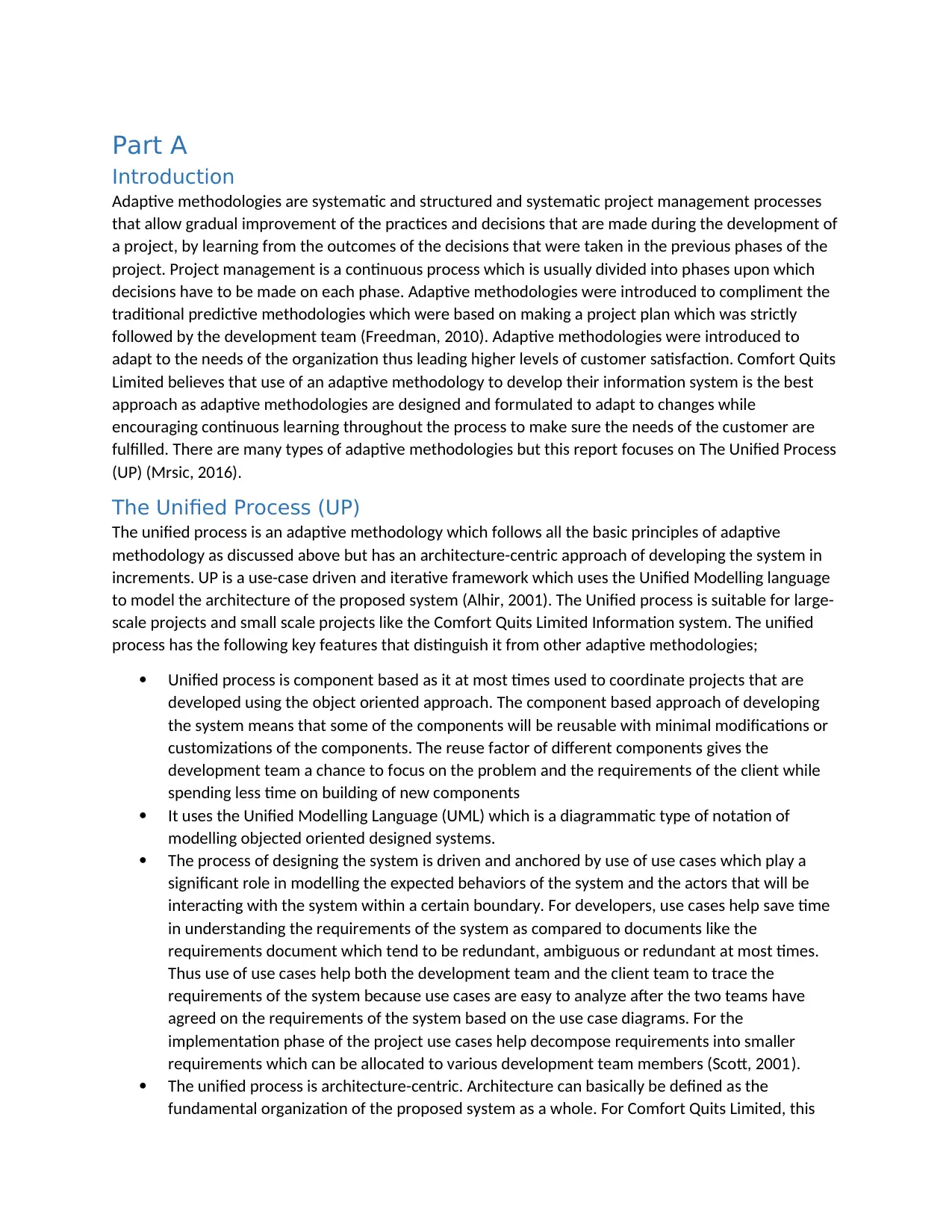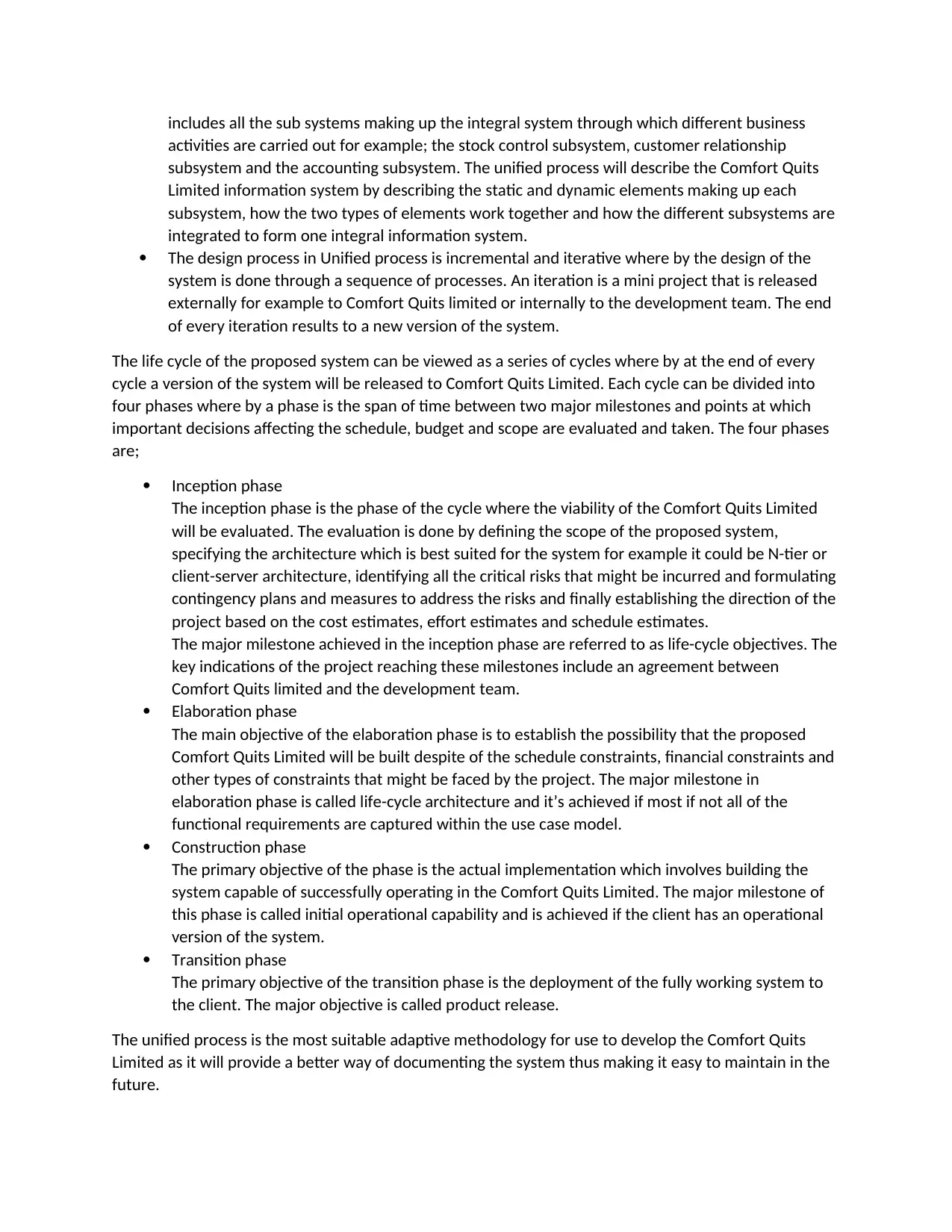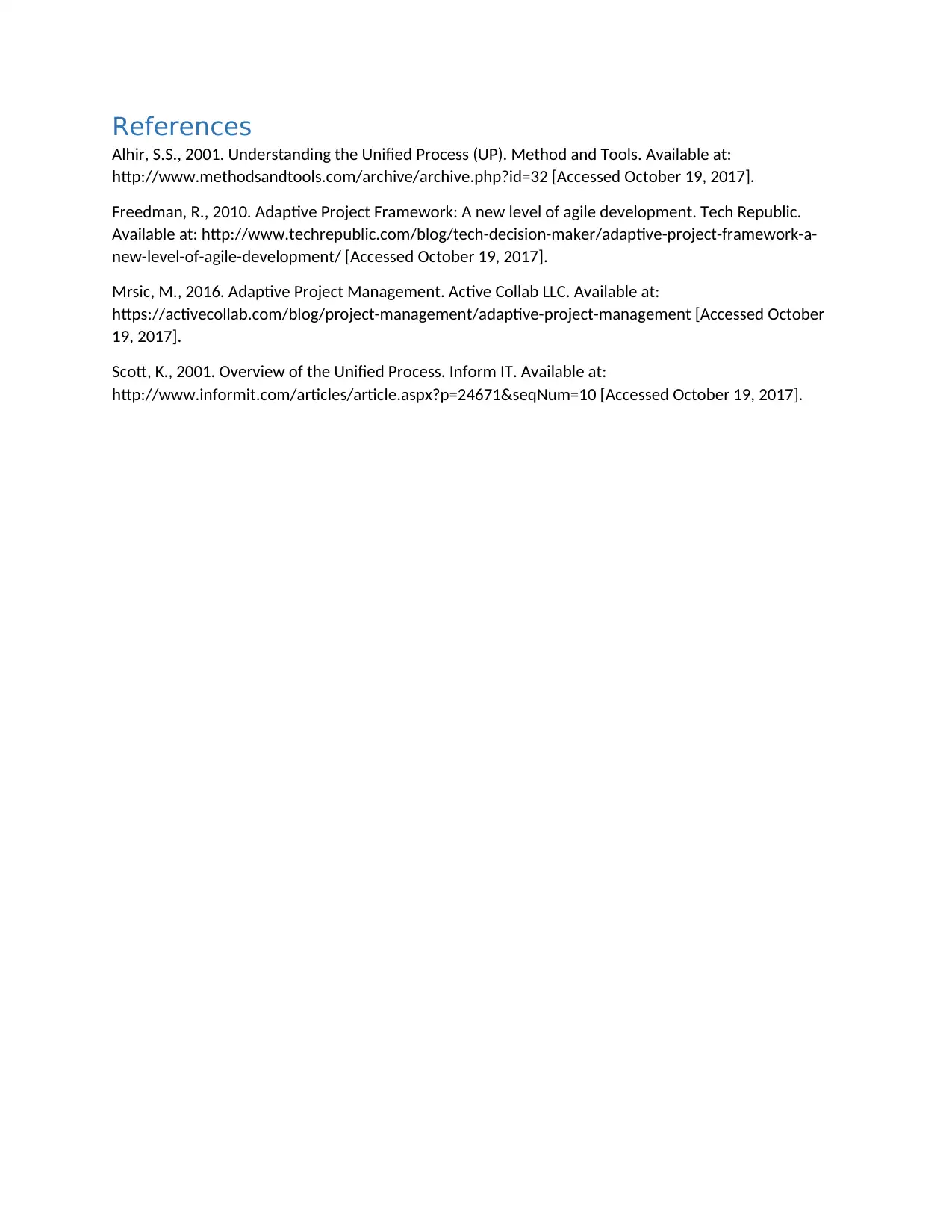Unified Process: An Adaptive Methodology for Information Systems
VerifiedAdded on 2020/05/04
|3
|1266
|63
Report
AI Summary
This report focuses on the Unified Process (UP), an adaptive methodology suitable for developing the information system for Comfort Quits Limited. The report begins with an introduction to adaptive methodologies, highlighting their advantages over traditional predictive approaches, particularly in adapting to changing organizational needs and ensuring customer satisfaction. The UP is presented as an architecture-centric, use-case driven, and iterative framework that leverages the Unified Modeling Language (UML). The report details the key features of UP, including its component-based approach, use of UML for modeling, and use-case driven design. The UP's incremental and iterative design process, which is divided into four phases: Inception, Elaboration, Construction, and Transition, is also thoroughly explained. Each phase, along with its objectives and major milestones, is described, emphasizing the importance of these milestones in evaluating project progress. The report concludes by asserting the UP's suitability for Comfort Quits Limited, emphasizing its ability to facilitate future system maintenance through improved documentation.
1 out of 3









![[object Object]](/_next/static/media/star-bottom.7253800d.svg)